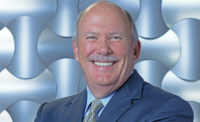Bill Hansmire has seen many changes in the tunneling world since starting out in the early 1970s. From complex computer software to precast concrete lining to the advent of giant tunnel boring machines (TBMs), the industry has been revolutionized.
“The changes are unimaginable,” says Hansmire, who is senior vice president and technical director for tunnels at WSP. “The ideas of the machines like the TBMs that we have today were unheard of in 1970.”
But something that has not changed is Hansmire’s love for a complex project.
“Tunneling is a challenge that few people have the opportunity to face, and sometimes a challenge that few will take,” says Hansmire, recipient of ENR California’s Legacy Award for his 50-year career leading iconic transit tunnel projects across the U.S. “Society’s demands today for transit, roadways, water and sewer cannot be accommodated above ground, and a tunnel often is the only way a project can be done. In many cases, a single tunnel can make all the rest possible.”
A perfect example of a need for space is downtown Los Angeles, where Hansmire is currently the design manager on the $1.7-billion Regional Connector Transit Project for LA Metro. This 1.9-mile underground light rail system, which will open in 2021, connects Little Tokyo, the Arts District, Civic Center, The Historic Core, Bunker Hill and the Financial District.
“The Regional Connector is a wonderful, diverse job; it has everything, from many types of engineering and temporary structures, to TBM tunneling, hand mine tunneling (with workers using hand tools) and cut-and-cover excavations,” says Hansmire, who joined the project in 2010. “The most challenging part of major projects like this is helping the client understand what the risks are and how it can be done with a reasonable amount of risk. And if you don’t believe in yourself, you will never build these things.”
As tunneling practices in the U.S. continue to evolve, Hansmire has spent much of his career working to improve the management of the high risks associated with underground construction and to help make better and fairer contracts for both owners and contractors.
“If tunnel projects were deemed too risky, I would be out of business,” he says. “Risk management became an essential part of tunnel engineering as a methodology to organize rational thinking on how to design and construct tunnels in safer ways and avoid damage to structures and utilities and to avoid the very costly delays.”
Hansmire’s work on the Regional Connector has been “invaluable,” says Gary H. Baker, LA Metro’s executive officer for the project. “His institutional knowledge of the project gives him a broad and unique perspective of issues, and his experience stimulates creative and innovating solutions. He is my go-to guy for significant underground challenges.”
Baker says Hansmire is well regarded by colleagues “as a problem solver with sound engineering judgment, willing to roll up his sleeves to bring practical and well-reasoned solutions to the table.”
A Nebraska native, Hansmire earned a degree in civil engineering from University of Nebraska and his masters and a PhD from the University of Illinois at Urbana-Champaign. While at Illinois, he did a thesis on the Washington, D.C., Metro. In the course of this research he met people from Parsons Brinckerhoff who would eventually help him land a job with the firm. That was 42 years ago, and Hansmire is still with the same company, as Parsons Brinckerhoff was acquired by WSP in 2014.
“Bill is highly respected by his peers and has had a profound impact on underground engineering projects in the U.S. and around the globe,” says Gregory A. Kelly, president and CEO of WSP USA. “He is a visionary leader who has redefined the limits of the tunneling industry.”
Hansmire has worked on transit tunnels in Washington, D.C., San Francisco, Los Angeles, Hawaii and San Juan, Puerto Rico. He was engineering manager for the Central Subway project in San Francisco and worked on the Anacostia Tunnel in D.C., the first U.S. transit tunnel project to use precast lining.
Besides the Regional Connector, Hansmire and WSP are currently wrapping up a feasibility study of underground structures for LA Metro’s Sepulveda Transit Corridor Project. This visionary plan could include a 20-mile tunnel that would go under the Santa Monica Mountains and connect the San Fernando Valley with Los Angeles International Airport.
Hansmire is a member of the National Academy of Engineering and recently edited a chapter on transit tunnels in the 2017 book “History of Tunneling in the United States.”








Post a comment to this article
Report Abusive Comment